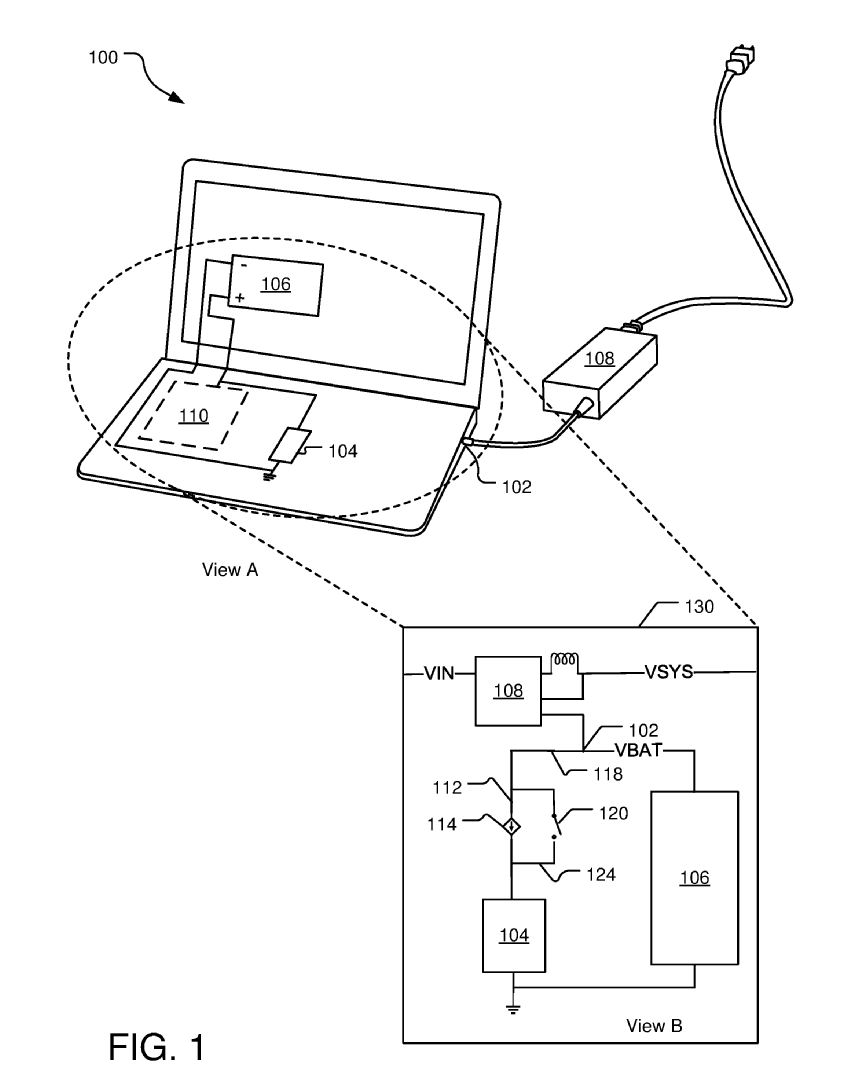Microsoft's patent shows off a unique way of improving the battery life of future Surface Book devices

Microsoft’s Surface Book has a lot of things that are unique and looks futuristic. The 2-in-one can be used as a full-fledged laptop as well as a giant tablet, and while fans and enthusiasts have welcomed this new design choice, it has a serious flaw.
As explained by Microsoft in a recently published document,
The inclusion of multiple batteries in an electronic device is one way to increase the runtime capacity. When batteries connected in parallel have identical charging characteristics (eg, total capacity and relative charge state at a given time), the batteries can be switched in series (to increase the voltage level) or in parallel (to maintain the same voltage level but to increase the total capacity) and with substantially identical charging and discharging rates are operated. However, if selected batteries have different charging characteristics, maintaining battery life may depend on normal operation of the batteries with different charging and / or discharging rates. For example, charging a low-capacity battery with a higher than recommended charge rate can cause the battery to deteriorate severely. Charging a high capacity battery at a lower than recommended charging rate will increase the charging time and may affect performance during battery discharge.
To counteract the charging challenges mentioned above, some systems separate rechargeable batteries with different charging characteristics during the charging process. For example, a high capacity battery and a low capacity battery may be successively charged by a single charger in sequence or in parallel with separate chargers. The sequential charging of batteries is time consuming and there is a danger that a sudden power failure will leave different batteries with different states of charge, so one battery will be recharged at another at an unsafe rate. Unlike sequential charging, parallel charging with different chargers is costly and can lead to complications in balancing the charge when the batteries are reconnected after charging.
Of course, in addition to the charging challenges in the development of parallel battery circuits described above, batteries with different charging characteristics can naturally discharge at different rates, resulting in unequal charging states. If two electrically-coupled batteries have unequal states of charge at any given time (eg, 20% charged and 70% charged), the higher-charged battery may attempt to discharge uncontrollably into the other battery. If this discharge is too high due to voltage differences and resistances within the batteries and between the batteries, the current protection may be triggered and / or the life of the batteries receiving the discharge may be impaired.
To counter the issue, Microsoft has developed a new technique by which it will be able to regulate the flow of current between batteries with different properties. The result is faster and more efficient charging process.
A device disclosed herein includes at least two batteries having different charging characteristics, connected in parallel and arranged to share a single charging node. The apparatus further includes a charge control circuit that controls an adjustable resistor in a charging path between the single charging node and a first battery. The charging control circuit determines a charging rate for the first battery based on a detected battery parameter, and controls the adjustable resistance to charge the first battery at the determined charging rate.
Now that the technology has been developed, it’s likely that Microsoft is going to introduce it in its future Surface Book devices
via: WindowsUnited
Read our disclosure page to find out how can you help MSPoweruser sustain the editorial team Read more





User forum
0 messages